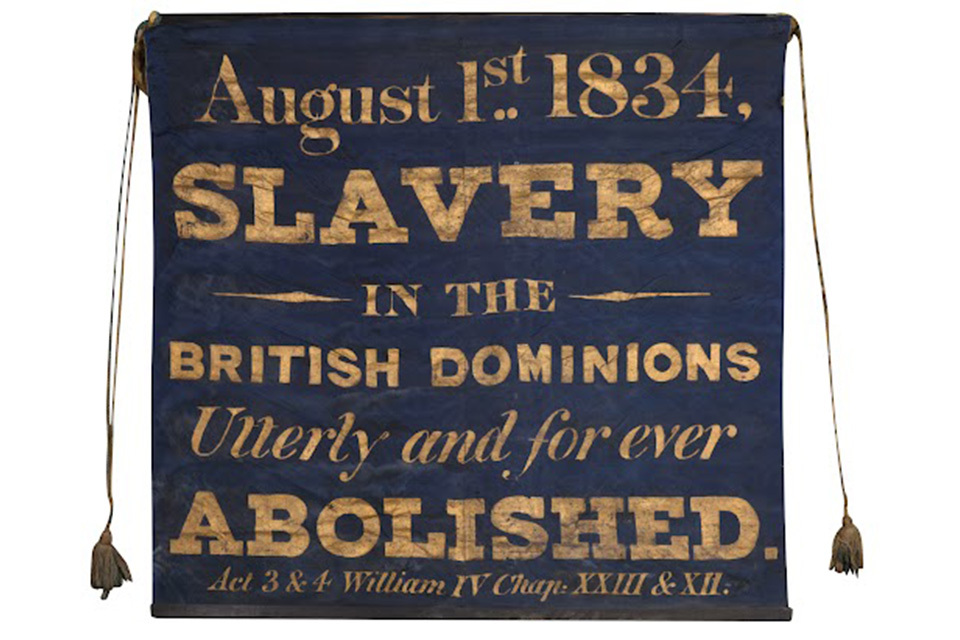
An export bar has been placed on a silk banner commemorating the Slavery Abolition Act 1833.
The banner, valued at £45,000 (plus VAT of £9,000 which can be reclaimed by an eligible institution) is at risk of leaving the UK unless a domestic buyer can be found to acquire it for the nation.
The banner commemorates the abolition of slavery on 1 August 1834, following the passing of the Slavery Abolition Act by Earl Grey’s administration.
The marching banner, measured at 97 centimetres high and 89 centimetres wide, is made from dark blue silk lettered with gold, with a cotton backing. It retains the original wooden dowel hanger and has silk tassels.
Whilst there is no exact confirmation of when the banner was created, it is likely to have been made within a decade of 1834 and before the abolition of slavery in the USA in 1865 following the American Civil War (1861-1864).
The decision follows the advice of the Reviewing Committee on the Export of Works of Art and Objects of Cultural Interest. The banner was found to meet the first and third Waverley criteria, on the grounds that its departure from the UK would be a misfortune because it was so closely connected with our history and national life and was of outstanding significance to the study of social justice and social and political history.
Committee member Caroline Shenton said: “As this country continues to grapple with the legacies of the British Empire and the enslavement of millions across its colonies, artefacts which shed light on this history are powerful witnesses to the past. Commemorative objects related to the abolition of slavery in the Empire are not uncommon but this banner is unique, as far as we know.
“Thanks to the temporary stop placed on its export, there is now an opportunity for a public institution to acquire it for the nation. There is much to research about who created this fluttering piece of gold and navy textile, and why, and where; about how it was used and deployed; and about its place within decolonising narratives exposing the political, social and economic ambiguities of abolition. But as well as its potential for scholarly exploration, this banner could become a profound means of public engagement as Britain’s reckoning with its slave-owning past continues. I therefore very much hope that a suitable home for this striking banner is found within this country, and soon.”
The decision on the export licence application for the banner will be deferred for a period ending on 18 August 2024 (inclusive). At the end of the first deferral period, owners will have a consideration period of 15 Business Days to consider any offer(s) to purchase the banner at the recommended price of £45,000 (plus VAT of £9,000 which can be reclaimed by an eligible institution). The second deferral period will commence following the signing of an Option Agreement and will last for three months.










